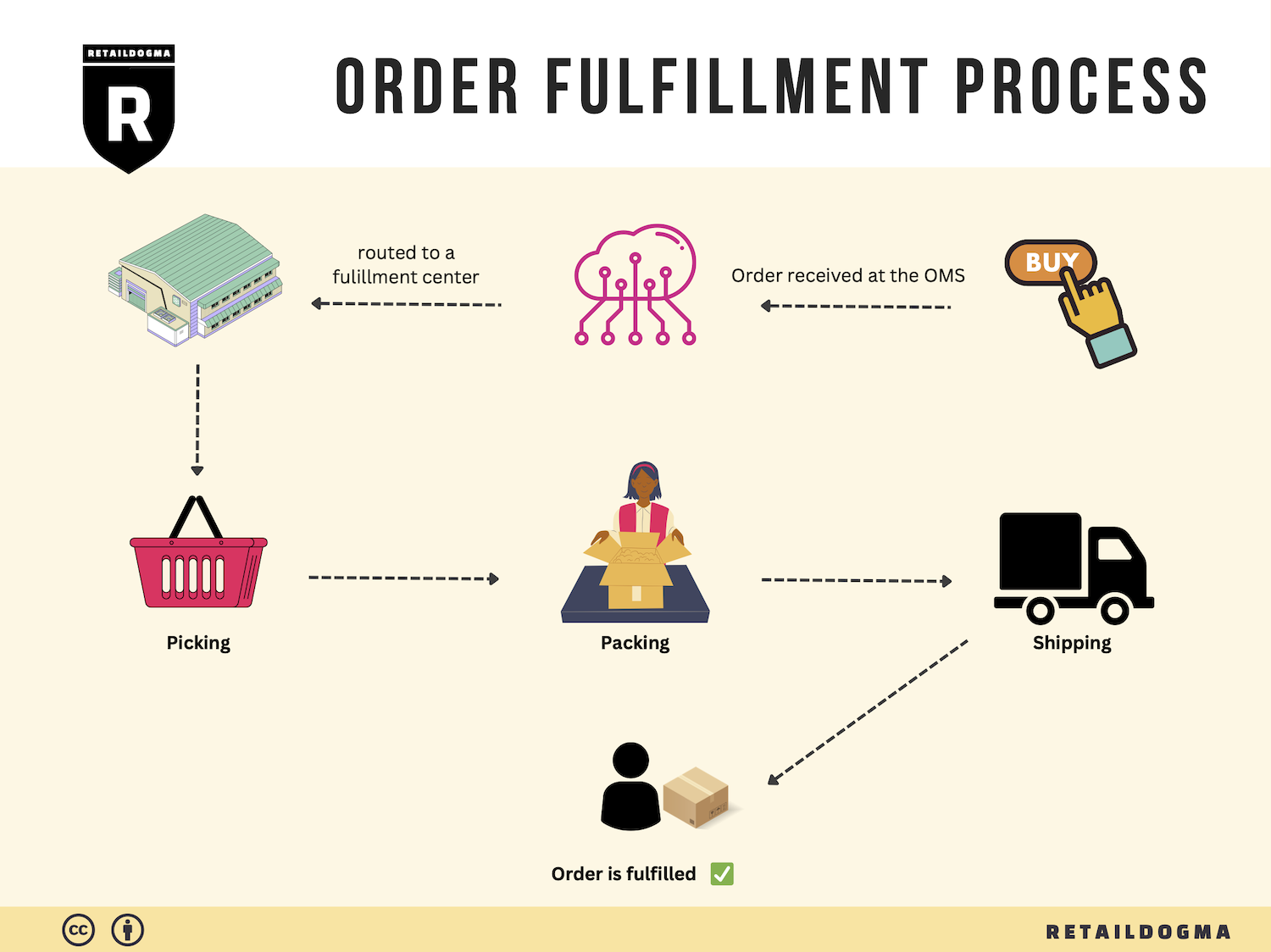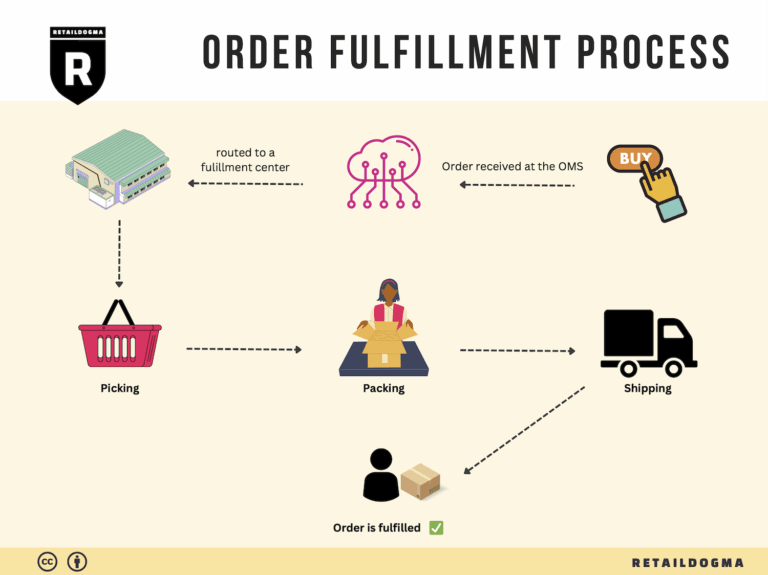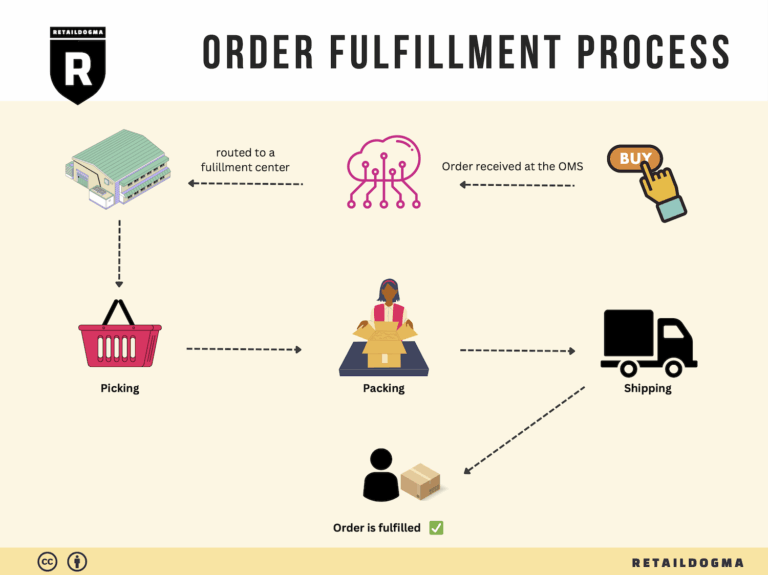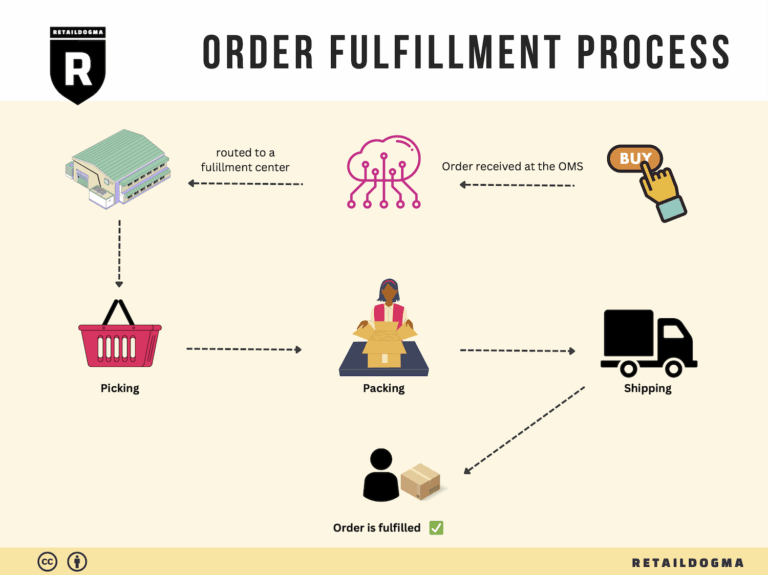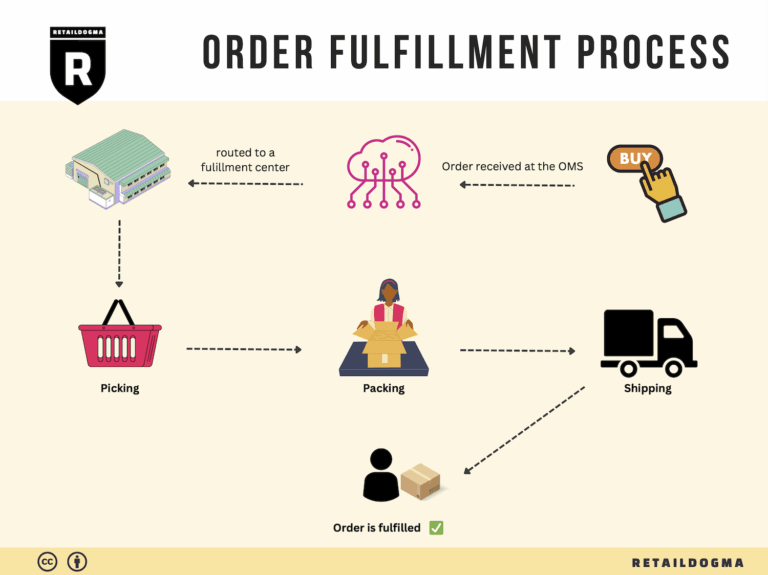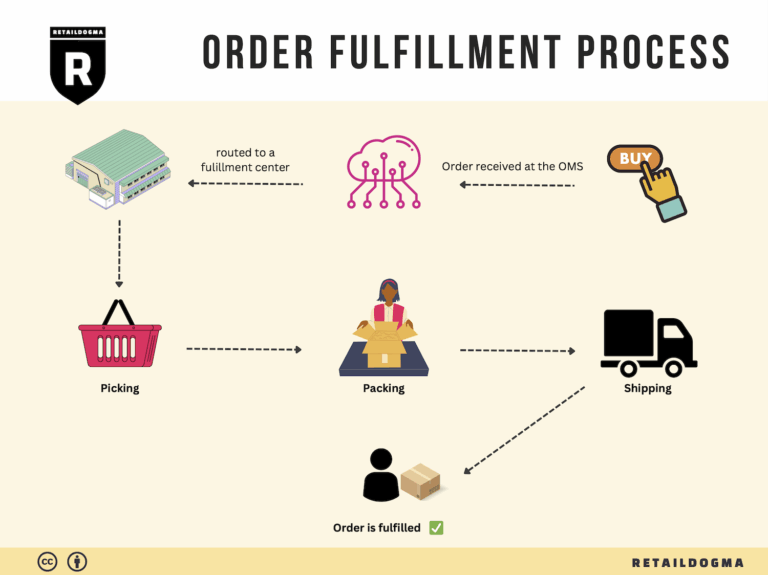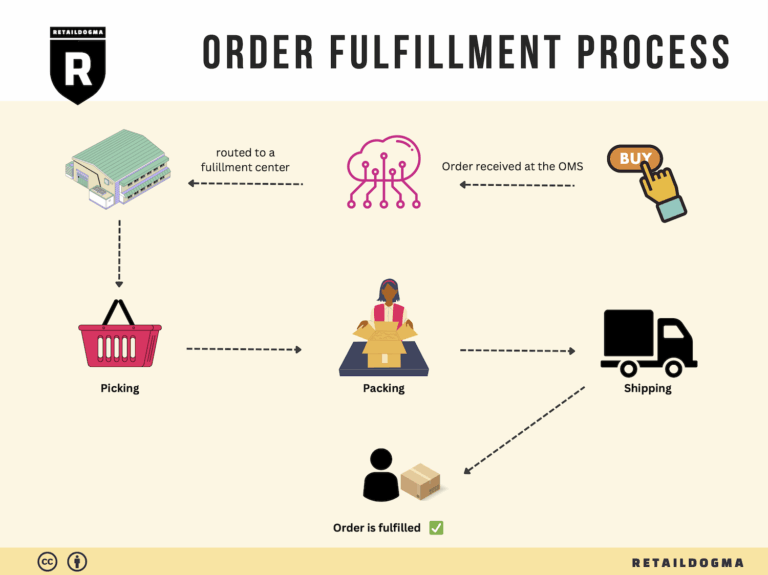How Order Fulfillment Works: A Step-by-Step Guide for Businesses
What is E-commerce Fulfillment? An Introduction for Growing Businesses
Understanding E-commerce Fulfillment: A Necessity for Growing Businesses
As an online business owner, you may find yourself grappling with the daunting task of packing and shipping orders, especially during peak seasons. This can lead to overwhelm, decreased efficiency, and ultimately, a negative impact on customer satisfaction. In an era where consumers expect quick and reliable delivery, having a robust e-commerce fulfillment strategy is not just beneficial—it’s essential.
E-commerce fulfillment is the comprehensive process of getting a product to the customer, encompassing everything from inventory management to packaging and shipping. It includes various stages: receiving inventory, storing it, processing orders, packing the products, and finally, shipping them to the customer’s doorstep. For growing businesses, understanding this process is crucial to scaling operations without compromising service quality.
In this guide, we will delve into the different fulfillment models available to e-commerce businesses. You’ll learn about third-party logistics (3PL) and Fulfillment by Amazon (FBA), two popular options that can streamline your operations and enhance your customer experience. Each model has its own set of benefits and considerations, allowing you to choose one that aligns best with your business goals.
We’ll also explore the core services that fulfillment partners offer, such as inventory tracking, order processing, and returns management. Understanding these services can help you identify what your business needs and how a fulfillment partner can provide those solutions effectively.
Choosing the right fulfillment partner is critical for your business’s success. In this guide, we will outline key factors to consider, including location, shipping speed, technology integration, and pricing structures. Each of these elements plays a vital role in ensuring that your logistics run smoothly and your customers remain satisfied.
Finally, we will discuss pricing considerations for various fulfillment options. Cost is often a significant concern for growing businesses, and understanding the pricing models will help you make informed financial decisions.
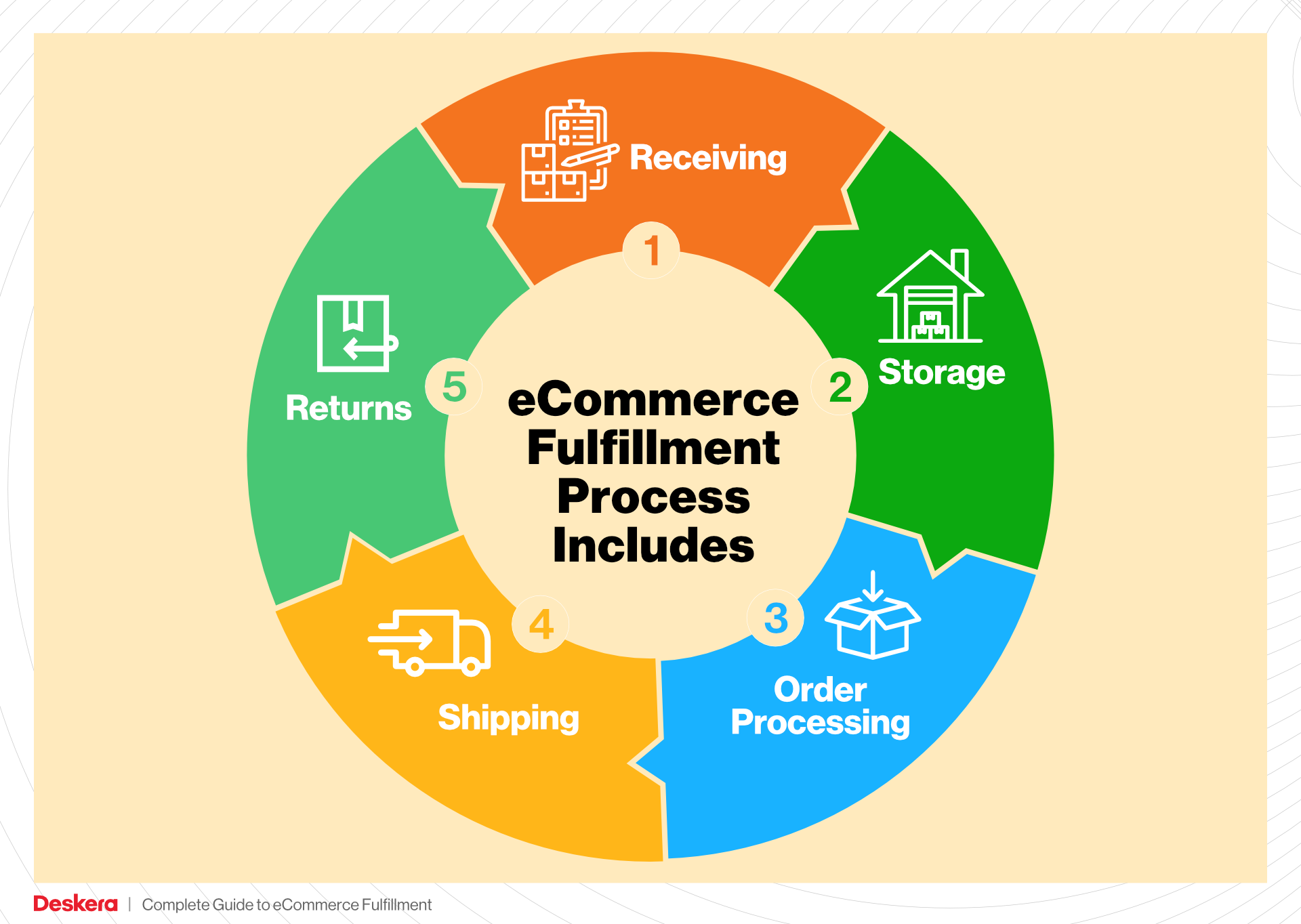
The goal of this guide is to empower you with the knowledge necessary to make smart decisions regarding your e-commerce logistics. By understanding the nuances of fulfillment, you can optimize your operations, enhance customer satisfaction, and ultimately, drive growth in your business. Whether you are just starting or looking to scale, this guide will serve as a valuable resource in your e-commerce journey.
What You’ll Learn In This Guide
- What is E-commerce Fulfillment? An Introduction for Growing Businesses
- The Order Fulfillment Process: From ‘Buy’ Button to Customer’s Door
- Comparing Fulfillment Models: In-House vs. 3PL vs. Dropshipping
- A Deep Dive into Amazon FBA: Pros, Cons, and Who It’s For
- Core Services Offered by Fulfillment Centers
- How to Choose a Fulfillment Partner: A 6-Point Checklist
- Understanding Fulfillment Pricing: A Breakdown of Common Fees
- Frequently Asked Questions (FAQs) about Fulfillment
- Conclusion: Is Outsourcing Fulfillment the Right Move for Your Business?
- Important Disclaimer
The Order Fulfillment Process: From ‘Buy’ Button to Customer’s Door
1. Receiving Inventory
The order fulfillment process begins with receiving inventory. This step involves the acceptance of goods from suppliers or manufacturers into your warehouse or fulfillment center. During this phase, the received items are checked against purchase orders to ensure accuracy in quantity and quality. This verification process often utilizes Stock Keeping Units (SKUs), which are unique identifiers assigned to each product, facilitating easy tracking and management.
Importance: Efficient receiving is crucial as it sets the foundation for the entire fulfillment process. Inaccuracies at this stage can lead to inventory discrepancies, which may affect order fulfillment and customer satisfaction. Accurate receiving also helps maintain a healthy inventory turnover, ultimately contributing to improved cash flow for your business.
2. Warehouse Storage
Once inventory is received and verified, the next step is warehouse storage. Products are organized and stored in designated locations within the warehouse. This organization can be based on various factors, including product type, size, demand, and the frequency of order fulfillment. Implementing a robust warehouse management system (WMS) can significantly enhance the efficiency of this process by optimizing storage layouts and streamlining inventory tracking.
Importance: Proper storage is vital for maintaining inventory accuracy and ensuring that products are easily accessible when needed. An organized warehouse minimizes the time spent searching for items, thereby reducing labor costs and speeding up the overall fulfillment process. Additionally, effective storage practices help prevent product damage, which can lead to increased costs and dissatisfied customers.
3. Order Picking
Order picking is the process of retrieving items from storage to fulfill a customer order. This step typically involves the use of pick lists, which detail the specific items and quantities required for each order. Depending on the volume of orders and the warehouse layout, businesses may employ various picking methods, such as single-order picking, batch picking, or zone picking.
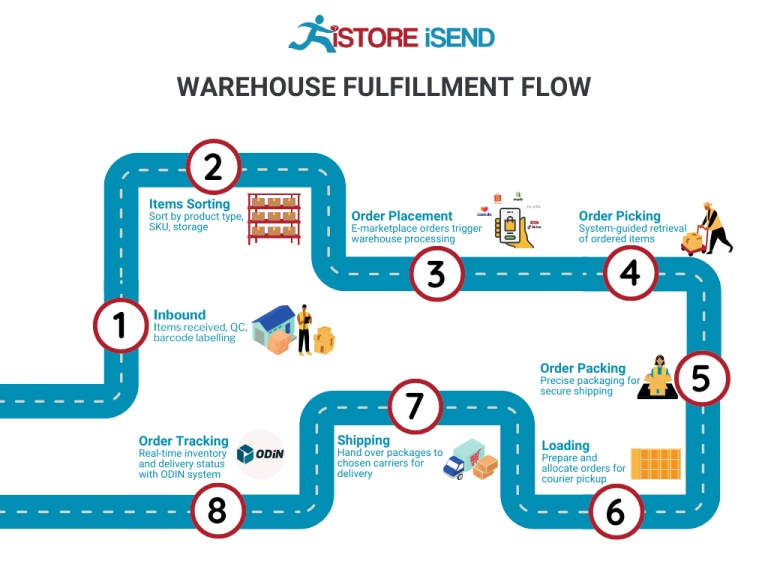
Importance: The efficiency of the picking process directly impacts order accuracy and fulfillment speed. Errors during picking can lead to wrong items being shipped, resulting in returns and customer dissatisfaction. By optimizing picking strategies and utilizing technology such as barcode scanners or mobile devices, businesses can enhance accuracy and streamline operations, ultimately improving customer experience.
4. Order Packing
After items have been picked, the next step is order packing. This stage involves securely packaging the selected items to ensure they arrive at the customer’s door in perfect condition. Packing materials, such as boxes, bubble wrap, and tape, should be chosen based on the nature of the products being shipped. Additionally, businesses can implement packing slips that accompany the order, providing customers with details about their purchase.
Importance: Effective packing is essential for minimizing damage during transit and ensuring customer satisfaction. Well-packed items not only reduce the likelihood of returns but also enhance the unboxing experience, which can encourage repeat business and positive reviews. Moreover, using eco-friendly packing materials can align with sustainability goals, appealing to environmentally conscious consumers.
5. Shipping & Delivery
The final step in the order fulfillment process is shipping and delivery. Once the order is packed, it is labeled and handed over to a shipping carrier for delivery to the customer. This step includes choosing the appropriate shipping method based on factors such as cost, speed, and destination. Businesses often use shipping software to manage and track shipments, which can provide real-time updates to customers.
Importance: Timely and accurate delivery is a significant factor in customer satisfaction. Delays or issues during shipping can lead to negative experiences and impact customer loyalty. By partnering with reliable carriers and utilizing tracking systems, businesses can enhance transparency in the shipping process, allowing customers to monitor their orders from dispatch to delivery. Furthermore, offering multiple shipping options can cater to different customer preferences, boosting overall satisfaction.
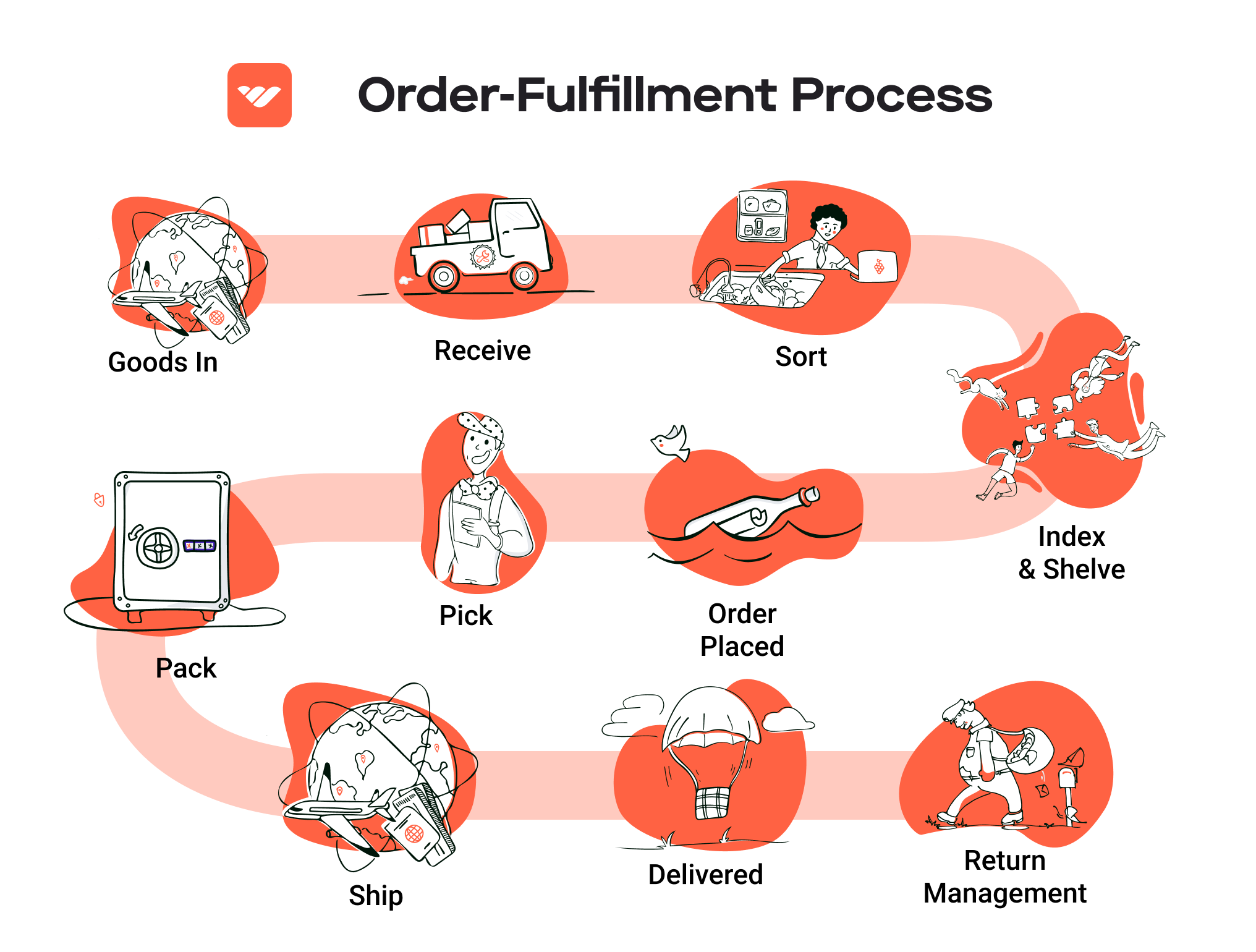
By understanding and optimizing each of these five steps in the order fulfillment process, e-commerce businesses can enhance efficiency, reduce costs, and ultimately improve customer satisfaction, paving the way for scalable growth.
Comparing Fulfillment Models: In-House vs. 3PL vs. Dropshipping
Fulfillment Model Comparison Table
| Model | Who Handles Inventory | Best For (Business Stage) | Key Advantage | Key Disadvantage |
|---|---|---|---|---|
| In-House Fulfillment | Business owner/team | Startups to small businesses | Full control over inventory and fulfillment process | High overhead costs and operational complexities |
| Third-Party Logistics (3PL) | Fulfillment partner | Growing to mid-sized businesses | Scalable operations and reduced shipping costs | Less control over inventory and fulfillment times |
| Dropshipping | Supplier/manufacturer | New entrepreneurs and niche stores | Low upfront investment and minimal risk | Limited control over shipping and customer service |
In-House Fulfillment
In-house fulfillment refers to when a business manages its own inventory, order processing, and shipping. This model is often favored by startups and small businesses that prioritize control over their fulfillment processes. By handling fulfillment in-house, business owners can maintain direct oversight of their inventory, ensuring that products are stored, packed, and shipped according to their standards. This model also allows for personalized customer service, as businesses can directly manage inquiries and issues related to orders. However, in-house fulfillment comes with significant overhead costs, including warehousing, staffing, and technology investments. As order volumes increase, the complexities of logistics and inventory management can quickly escalate, leading to potential delays and inefficiencies.
Third-Party Logistics (3PL)
Third-party logistics (3PL) providers offer a solution where businesses outsource their fulfillment processes to specialized partners. This model is ideal for businesses that are experiencing growth and need to scale their operations efficiently. 3PL partners typically operate fulfillment centers strategically located near major transport hubs, enabling faster shipping times and reduced logistics costs. By leveraging a 3PL, businesses can benefit from the provider’s expertise in inventory management, order processing, and shipping logistics. This allows business owners to focus on core activities such as marketing and product development. However, the trade-off is a reduction in control over inventory and fulfillment processes, which can lead to variability in shipping times and customer experience. Companies must carefully choose a reputable 3PL partner to mitigate these risks and ensure alignment with their brand values.
Dropshipping
Dropshipping is a fulfillment model where the retailer does not hold inventory but instead forwards customer orders to a supplier or manufacturer, who then ships the product directly to the customer. This model is particularly appealing for new entrepreneurs and niche stores, as it requires little upfront investment and eliminates the need for warehousing and inventory management. Dropshipping allows businesses to offer a wide range of products without the financial burden of stocking items. However, this model comes with significant drawbacks, including limited control over product quality, shipping times, and customer service. Since the retailer relies on third parties for fulfillment, issues such as stock shortages or delayed shipments can adversely impact the customer experience. Additionally, the competition can be fierce in the dropshipping space, often leading to lower profit margins.
Conclusion
Choosing the right fulfillment model is crucial for the success and scalability of an e-commerce business. Each option—whether in-house fulfillment, 3PL, or dropshipping—has its own set of advantages and challenges. Business owners must evaluate their specific needs, resources, and growth plans to select the model that best aligns with their operational goals. By understanding the nuances of each fulfillment method, entrepreneurs can make informed decisions that enhance their logistics capabilities and improve customer satisfaction.
A Deep Dive into Amazon FBA: Pros, Cons, and Who It’s For
What is Fulfillment by Amazon (FBA)?
Fulfillment by Amazon (FBA) is a service offered by Amazon that allows e-commerce sellers to store their products in Amazon’s fulfillment centers. In return, Amazon handles the storage, packing, and shipping of these products directly to customers. This service also includes customer service and returns management, making it an appealing option for merchants looking to simplify their logistics operations.
When a seller uses FBA, their products become eligible for Amazon Prime, which can significantly enhance visibility and sales potential. Sellers send their inventory to Amazon’s warehouses, and when a customer places an order, Amazon picks, packs, and ships the product on the seller’s behalf. Sellers can monitor their inventory and sales through Amazon’s comprehensive dashboard, which provides real-time updates and performance metrics.
How FBA Works
-
Setting Up: Sellers begin by creating an Amazon seller account and enrolling in FBA. They then prepare their products according to Amazon’s guidelines, which include labeling and packaging requirements.
-
Shipping Inventory: Once the products are ready, sellers ship them to Amazon’s designated fulfillment centers. Amazon provides shipping plans and may even offer discounted shipping rates.
-
Storage and Management: Amazon stores the inventory in their warehouses. Sellers can track their inventory levels through the Amazon Seller Central dashboard.
-
Order Fulfillment: When a customer orders a product, Amazon takes care of the entire fulfillment process, from picking the item off the shelf to packing it and shipping it to the customer.
-
Customer Service and Returns: FBA includes 24/7 customer support for any inquiries related to the order. Amazon also handles returns, making the process seamless for both sellers and customers.
Pros of Using FBA
1. Prime Eligibility
One of the most significant advantages of FBA is that products become eligible for Amazon Prime. This means that Prime members can receive their orders with free two-day shipping, which increases the likelihood of purchases. Prime eligibility can lead to higher conversion rates, as many customers prefer to shop for Prime-eligible items.
2. Customer Trust
Amazon is a well-established brand known for its customer service and reliable delivery. By using FBA, sellers can leverage this trust. Customers are often more willing to purchase products that are fulfilled by Amazon, as they associate Amazon with fast shipping and hassle-free returns.
3. Multi-Channel Fulfillment
FBA is not limited to Amazon alone. Sellers can use FBA for orders placed on other sales channels, such as their own websites or other e-commerce platforms. This feature allows businesses to streamline their fulfillment process across multiple channels while enjoying the benefits of Amazon’s logistics network.
Cons of Using FBA
1. High Fees
While FBA can simplify logistics, it comes at a cost. Amazon charges various fees, including storage fees for holding inventory in their warehouses and fulfillment fees for picking, packing, and shipping orders. These fees can eat into a seller’s profit margins, especially for lower-priced items.
2. Strict Inventory Rules
Amazon has strict guidelines regarding inventory management. Sellers must maintain a certain level of inventory, and those who fail to meet these standards may face additional fees or penalties. This can be a challenge for small businesses that may not have the resources to manage inventory effectively.
3. Commingling Risks
When sellers use FBA, their products may be commingled with products from other sellers. This can lead to challenges if a customer receives a defective item or if there are issues with counterfeit products. While Amazon has measures in place to mitigate these risks, sellers may find it difficult to ensure the quality of their products when stored alongside others.
Who is FBA Best For?
Fulfillment by Amazon is particularly beneficial for:
-
Established E-commerce Brands: Companies that already have a strong presence on Amazon can leverage FBA to enhance their sales and streamline logistics.
-
Sellers with High Order Volumes: Businesses that experience high order volumes can benefit from Amazon’s efficient fulfillment network, as it allows them to focus on other aspects of their business.
-
New Sellers Seeking Exposure: New sellers can gain immediate access to Amazon’s massive customer base and the trust associated with Prime eligibility, helping them establish their brand.
-
Multi-Channel Sellers: Businesses selling on multiple platforms can use FBA to simplify logistics, ensuring fast and reliable order fulfillment across various channels.
In conclusion, while Fulfillment by Amazon offers numerous advantages, including Prime eligibility and customer trust, it also comes with challenges such as high fees and strict inventory management rules. E-commerce business owners must weigh these factors carefully to determine if FBA aligns with their operational goals and growth strategies.
Core Services Offered by Fulfillment Centers
Inventory Management & Warehousing
Inventory management is the backbone of any successful e-commerce operation. Fulfillment centers provide sophisticated inventory management systems that allow businesses to track stock levels in real-time. This includes automated alerts for low stock, enabling businesses to restock before running out of inventory. The warehousing component offers strategically located storage facilities, which can significantly reduce shipping times by placing products closer to customers.
The benefit of effective inventory management and warehousing is twofold. Firstly, it minimizes the risk of stockouts or overstock situations, ensuring that products are available when customers want them. This reliability fosters customer trust and satisfaction, as consumers are less likely to abandon their carts when they know products are readily available. Secondly, it optimizes storage costs; businesses only pay for the space they need and can scale their warehousing needs as they grow. A well-managed inventory system also provides valuable insights into sales trends, helping businesses make informed decisions about future purchases and marketing strategies.
Pick and Pack Services
Pick and pack services are integral to the fulfillment process. Once an order is placed, fulfillment centers utilize efficient picking systems to locate the items in their warehouse. These items are then packed securely for shipment. Advanced technology, such as barcode scanning and automated sorting systems, enhances accuracy and speed in the picking process.
For e-commerce businesses, the advantage of using pick and pack services is the significant reduction in labor costs and the time it takes to fulfill orders. Outsourcing this function allows businesses to focus on core activities like marketing and customer engagement rather than logistics. Moreover, fulfillment centers often have the expertise to optimize packaging, ensuring that products are shipped in a way that minimizes damage and reduces shipping costs. This results in an overall improvement in order accuracy and customer satisfaction, leading to repeat purchases.
Kitting and Assembly
Kitting and assembly services involve grouping individual items together to create a single, bundled product. This is particularly useful for businesses that sell products that are often purchased together or require assembly before use. Fulfillment centers can handle this process, ensuring that products are packaged together correctly and efficiently.
The benefits of kitting and assembly services for e-commerce businesses are substantial. Firstly, it allows for the creation of unique product offerings, enhancing the customer experience and potentially increasing average order value. For instance, a business selling a coffee maker could offer a kit that includes coffee beans, filters, and a mug. Secondly, it streamlines the fulfillment process for complex orders. Instead of sending multiple packages, businesses can ship a single kit, reducing shipping costs and improving delivery times. This service also helps reduce inventory complexity, as fulfillment centers can maintain lower stock levels of individual items while still offering bundled products.
Returns Management (Reverse Logistics)
Returns management, or reverse logistics, is a critical component of e-commerce fulfillment that often gets overlooked. Fulfillment centers not only handle the shipping of products to customers but also manage the process of returns. This includes receiving returned items, inspecting them, and determining whether they can be restocked or require further action, such as repairs or disposal.
The importance of effective returns management cannot be understated. A streamlined returns process enhances customer satisfaction, as it allows for hassle-free returns, which is a significant factor in online shopping. According to research, consumers are more likely to make a purchase if they know they can return items easily. Furthermore, efficient reverse logistics can help businesses recover value from returned products. By quickly processing returns and restocking items, businesses can minimize losses and maintain healthier inventory levels.
In summary, fulfillment centers offer essential services that can help e-commerce businesses scale efficiently. From inventory management and warehousing to pick and pack services, kitting and assembly, and returns management, leveraging these core services enables businesses to focus on growth while ensuring customer satisfaction. By choosing the right fulfillment partner, e-commerce entrepreneurs can optimize their logistics operations and create a seamless shopping experience for their customers.
How to Choose a Fulfillment Partner: A 6-Point Checklist
Location & Warehouse Network
Why It’s Important:
The location of your fulfillment partner’s warehouses can significantly impact shipping costs and delivery times. A strategically placed warehouse network helps minimize transit distances, ensuring faster delivery to customers, which is crucial for maintaining customer satisfaction and loyalty.
Questions to Ask:
– Where are your fulfillment centers located, and how do they align with my target market?
– How many fulfillment centers do you operate, and what is their geographic coverage?
– Do you have plans to expand your warehouse network in the near future?
Technology & Integrations
Why It’s Important:
Effective order fulfillment relies heavily on technology. A partner with robust technology will provide real-time inventory tracking, order management, and seamless integration with your e-commerce platform (e.g., Shopify). This ensures smooth operations and minimizes errors, allowing you to focus on scaling your business.
Questions to Ask:
– What technology platforms do you use for inventory management and order processing?
– Can your system integrate with my existing e-commerce platforms and marketplaces?
– Do you provide real-time tracking and reporting capabilities for my orders?
Specializations (e.g., Cold Storage, Oversized Items)
Why It’s Important:
Different products have unique storage and shipping requirements. If your business involves specialty items such as perishables that require cold storage or oversized products, selecting a partner with the appropriate facilities and expertise is essential. This will ensure that your products are handled correctly, maintaining quality and compliance with regulations.
Questions to Ask:
– Do you have specialized facilities for handling specific types of products (e.g., refrigerated items, fragile goods)?
– What measures do you have in place to ensure product integrity during storage and transit?
– Can you accommodate unique packing and shipping requirements for oversized or irregularly shaped items?
Scalability & Capacity
Why It’s Important:
As your business grows, your fulfillment needs will likely change. It’s vital to partner with a fulfillment provider that can scale with you, whether you’re experiencing seasonal spikes or long-term growth. A partner with adequate capacity ensures that you won’t face delays or stockouts during high-demand periods.
Questions to Ask:
– How do you handle increased order volumes, particularly during peak seasons?
– What is your capacity for scaling operations, and how quickly can you accommodate growth?
– Can you provide case studies or examples of how you’ve supported clients during periods of rapid growth?
Pricing and Contracts
Why It’s Important:
Understanding the pricing structure and contract terms of your fulfillment partner is crucial for managing your budget and ensuring profitability. Hidden fees or unfavorable contract terms can quickly erode your margins. Clear and transparent pricing helps you make informed decisions.
Questions to Ask:
– What is your pricing structure, and what specific services are included in that pricing?
– Are there any additional fees for storage, handling, returns, or shipping?
– Can you provide a sample contract, and what are the terms regarding contract termination or changes?
Customer Support & Reviews
Why It’s Important:
Reliable customer support is essential for resolving issues quickly and efficiently. A responsive fulfillment partner can help you navigate challenges, ensuring that your operations run smoothly. Additionally, researching reviews and testimonials can provide insights into the partner’s reliability and service quality.
Questions to Ask:
– What customer support options do you offer (e.g., phone, email, live chat)?
– How quickly can I expect responses to my inquiries or issues?
– Can you provide references or case studies from current or past clients?
Conclusion
Selecting the right fulfillment partner is a critical decision for any e-commerce business looking to scale. By using this checklist, you can systematically evaluate potential partners based on essential criteria, ensuring that you choose a provider that aligns with your operational needs and growth objectives. A strategic partnership in fulfillment can significantly enhance your efficiency, customer satisfaction, and ultimately, your bottom line.
Understanding Fulfillment Pricing: A Breakdown of Common Fees
Initial Setup Fees
When partnering with a fulfillment provider, businesses often encounter initial setup fees. These fees cover the cost of establishing your account, integrating systems, and preparing your inventory for storage and processing. The setup process may involve configuring software to sync with your e-commerce platform, which can include data migration and system tests to ensure seamless order processing.
Initial setup fees can vary widely, typically ranging from $50 to several thousand dollars, depending on the complexity of your operations and the fulfillment partner’s offerings. Some providers may waive these fees as part of promotional offers or for businesses committing to a long-term contract. It’s essential to clarify what the setup fee includes to avoid unexpected charges later.
Receiving Fees
Receiving fees are incurred when your inventory arrives at the fulfillment center. These fees cover the labor and equipment required to unload, inspect, and store your products. The calculation for receiving fees is usually based on the volume of goods received, which can be assessed in terms of weight or the number of individual units.
On average, receiving fees can range from $25 to $100 per pallet or shipment, depending on the fulfillment center’s policies. Some providers may charge additional fees for special handling, such as unpacking items or inspecting for damages. To minimize receiving fees, consider consolidating shipments and ensuring your products are well-packaged to streamline the receiving process.
Storage Fees (per pallet/bin)
Storage fees are charged for the space your inventory occupies within the fulfillment center. These fees can be calculated on a per-pallet or per-bin basis, and they are typically billed monthly. Storage fees account for the cost of maintaining the facility, including utilities, security, and inventory management systems.
Costs can vary significantly based on location, with urban centers generally commanding higher rates than rural areas. On average, you might expect to pay between $15 to $50 per pallet per month. For bin-based storage, fees could range from $2 to $10 per bin, depending on size and location. To control storage costs, regularly review your inventory levels and work with your fulfillment partner to optimize space usage, such as through better inventory turnover or seasonal storage agreements.
Pick & Pack Fees (per item/order)
Pick and pack fees are associated with the labor involved in selecting items from inventory and packaging them for shipment. These fees can be calculated on a per-item or per-order basis, depending on the fulfillment provider’s pricing model. The pick fee is charged for each item selected, while the pack fee covers the packaging process.
Typically, pick and pack fees range from $0.50 to $3.00 per item, with discounts often applied for higher order volumes. Some providers may offer flat-rate pricing for orders containing multiple items, which can simplify budgeting. To manage these costs effectively, consider optimizing your product listings to reduce the number of different SKUs in each order or employing kitting strategies that bundle products together for faster processing.
Shipping Fees
Shipping fees are one of the most significant components of fulfillment pricing and can vary based on several factors, including the shipping method, destination, and package dimensions. Most fulfillment centers negotiate rates with carriers, which can lead to significant savings for businesses.
Shipping fees can be calculated based on weight, dimensions, and the service level chosen (e.g., standard, expedited, or overnight shipping). On average, shipping costs can range from $5 to $20 for domestic shipments, while international shipping can be significantly higher. To optimize shipping costs, evaluate your shipping strategy, consider using flat-rate shipping options, and leverage your fulfillment provider’s relationships with carriers for discounted rates.
Tips for Getting an Accurate Quote
-
Provide Detailed Inventory Information: When requesting quotes, offer comprehensive details about your inventory, including dimensions, weight, and any special handling requirements. This transparency will help fulfillment providers give you a more accurate estimate.
-
Consider Seasonal Variations: If your business experiences seasonal fluctuations, be sure to communicate this with your fulfillment partner. Discuss how storage and shipping fees may change during peak seasons.
-
Ask About Volume Discounts: Inquire about pricing structures based on order volume. Many fulfillment centers offer tiered pricing, which can lead to lower costs as your order volume increases.
-
Review All Fee Components: Ensure you understand all components of the quote, including any potential hidden fees. Ask for a breakdown of initial setup, receiving, storage, pick and pack, and shipping fees to avoid surprises.
-
Negotiate Terms: Don’t hesitate to negotiate terms, especially if you’re considering a long-term partnership. Fulfillment providers may be willing to adjust pricing or offer promotional discounts for new clients.
By understanding these common fulfillment pricing models and effectively communicating your needs, you can make informed decisions that align with your business goals and budget.
Frequently Asked Questions (FAQs) about Fulfillment
1. What is Shopify Fulfillment Service?
Shopify Fulfillment Service is a logistics solution that enables Shopify merchants to outsource their order fulfillment processes. It connects businesses with trusted third-party logistics (3PL) partners to manage inventory, pack orders, and handle shipping efficiently, ensuring faster delivery times and improved customer satisfaction.
2. How does Shopify Fulfillment Service work?
Once you sign up for the Shopify Fulfillment Service, you send your inventory to a designated fulfillment center. When a customer places an order, the fulfillment partner picks, packs, and ships the order directly to the customer. You can manage everything from your Shopify dashboard, tracking orders and inventory seamlessly.
3. What is the difference between a warehouse and a fulfillment center?
A warehouse primarily serves as a storage space for products, while a fulfillment center is designed specifically for processing and shipping orders. Fulfillment centers are equipped to handle order picking, packing, and shipping efficiently, often utilizing technology to streamline operations, whereas warehouses focus more on inventory storage.
4. What is a 3PL?
A 3PL, or third-party logistics provider, is a company that offers outsourced logistics services, including warehousing, fulfillment, and distribution. By partnering with a 3PL, e-commerce businesses can leverage their expertise and resources to manage complex logistics operations, allowing them to focus on core business activities.
5. How much do fulfillment services cost?
Fulfillment service costs can vary significantly based on factors such as order volume, storage space, and shipping rates. Generally, costs may include storage fees (charged per cubic foot), order fulfillment fees (charged per item), and shipping fees (based on weight and distance). It’s essential to request quotes from different providers to find a solution that fits your budget.
6. What types of businesses can benefit from Shopify Fulfillment Service?
Shopify Fulfillment Service is ideal for e-commerce businesses of all sizes, especially those experiencing growth or high order volumes. It benefits online retailers looking to streamline their logistics, improve delivery times, and enhance customer satisfaction without the overhead of managing in-house fulfillment.
7. Can I use Shopify Fulfillment Service for international shipping?
Yes, Shopify Fulfillment Service can facilitate international shipping. However, it is crucial to understand the additional costs and regulations associated with international logistics, including customs duties and tariffs. Make sure to consult with your fulfillment partner to ensure compliance and accurate shipping costs.
8. What is the process for returning items with Shopify Fulfillment Service?
Returns processing is generally handled by the fulfillment partner. When a customer requests a return, they can follow the designated return process outlined by your store. The fulfillment center will manage the return logistics, including receiving the returned item, inspecting it, and restocking it in your inventory.
9. How can I track my orders with Shopify Fulfillment Service?
Order tracking is integrated within the Shopify platform. Once an order is shipped, customers receive tracking information via email, and you can also monitor order status directly from your Shopify dashboard. This visibility helps you manage customer inquiries and provide timely updates.
10. What should I consider when choosing a fulfillment partner?
When selecting a fulfillment partner, consider factors such as shipping speed, order accuracy, storage capabilities, and technology integration with your Shopify store. Additionally, evaluate their customer service, pricing structure, and any additional services they offer, such as returns management or custom packaging.
Conclusion: Is Outsourcing Fulfillment the Right Move for Your Business?
Evaluating the Benefits of Outsourcing Fulfillment
Outsourcing fulfillment can be a game-changer for e-commerce businesses aiming to scale efficiently. By leveraging a fulfillment service, you can save significant time that would otherwise be spent on inventory management, packing, and shipping. This allows you to focus on core business activities like marketing and customer engagement, which are crucial for growth.
Another critical advantage is scalability. As your order volume increases, a fulfillment partner can seamlessly accommodate this growth without the need for substantial investments in infrastructure or additional personnel. This flexibility allows you to respond quickly to market demands, seasonal peaks, or unexpected surges in sales without compromising service quality.
Moreover, fulfillment services bring specialized expertise to the table. These partners have the knowledge and resources to streamline logistics, optimize shipping routes, and negotiate better shipping rates. This not only enhances your operational efficiency but also improves customer satisfaction through timely deliveries and effective returns management.
However, the choice of a fulfillment partner is vital for your business’s long-term success. A partner that aligns with your business model, product type, and customer expectations can help you scale effectively while minimizing operational headaches.
Take Action Now
To determine if outsourcing fulfillment is the right step for your business, conduct a thorough audit of your current shipping and fulfillment processes. Assess areas where you may be experiencing inefficiencies or excessive costs. Consider your growth projections and how a fulfillment partner could help you achieve them more effectively.
By taking a strategic approach to your fulfillment needs, you can position your business for sustainable growth and enhanced customer satisfaction. Don’t wait—explore your options today and see how a fulfillment service can transform your logistics strategy.
Important Disclaimer
⚠️ Important Disclaimer
The information in this guide is for educational purposes. Fulfillment services, pricing, and platform features change frequently. Always conduct your own due diligence and consult with providers directly before making business decisions.
